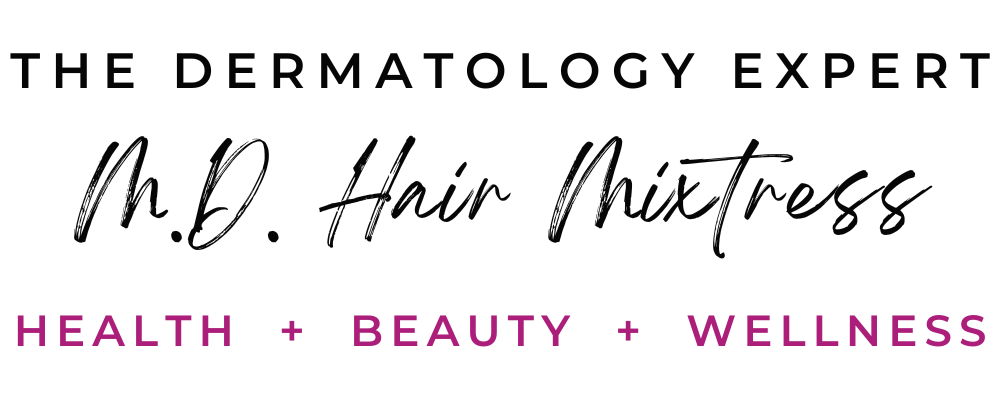Heat damaged hair is not uncommon. Flat ironing, blow-outs and curling the hair can all lead to heat damage if they are not done correctly. Thankfully, there are steps that you can take to avoid heat damage, and to help fix heat damaged hair if it has already happened to you.
What Causes Heat Damaged Hair?
Heat damaged hair occurs when the hair is exposed to a high enough heat that the disulfide bonds of the hair are permanently broken. Just as chemical relaxers permanently break the disulfide bonds of the hair, extreme heat can also do this. Typically, when curly hair is straightened, the hydrogen bonds in the hair are temporarily broken, allowing the hair to become straight. When the hair is exposed to water, the hydrogen bonds begin to reform and the hair reverts to its normal/curly state. However, when disulfide bonds break, this is generally permanent, so the hair is not able to go back to its normal/curly state.
Hair that is fine or porous can be more susceptible to heat damage. Also, using flat irons, pressing combs, and curling irons that are too hot—especially without a heat protectant—can lead to heat damaged hair.
The Science Behind Heat Damaged Hair

Bubble hair
Heat damage can occur when wet hair is exposed to excessive amounts of heat. Excessive heat can cause bubbles to form within the hair shaft. When the water in the hair is heated, it turns to steam. This steam forms bubbles within the hair shaft, which damage the hair. A damaged hair shaft is much more likely to appear dull, tangled and it tends to break very easily whenever the hair is combed or styled.
How Can I Tell If I Have Heat Damaged Hair?
Heat damaged hair may look thin and limp. The ends of the hair may be thinner than the rest of the hair. This is due to the increased fragility and breakage of the hair. Hair that is heat damaged may also be dull and more likely to tangle. When styling the hair, there may be shorter strands of broken hair on your clothing or around your bathroom sink.
Preventing Heat Damaged Hair
To prevent heat damage, it’s important to avoid exposing the hair to excessive heat. Try alternating air drying with using a blow dryer. You can also set your blow dryer on a lower heat setting. If you flat iron or straighten your hair, try to increase the time period between straightening sessions. For those that prefer to wear the hair straight, there are methods to safely stretch or straighten the hair with heat, such as tension blow drying and roller set.
Keep in mind:
• Avoid excessive heat (don’t go over 350°)
• Don’t apply heat more than once per week
• Use a heat protectant
Fixing Heat Damaged Hair
If your hair is heat damaged, don’t despair! There are several things that you can do to boost the moisture and strength of your hair and keep it looking good while the heat damaged hair grows out.
1. Do Protein Treatments
Protein treatments, either commercial, or natural like yogurt and mayonnaise, can strengthen the hair shaft. Protein treatments fill in the weak areas of the hair shaft—helping it to be stronger and less likely to break. Henna is another popular strengthening regimen that some women swear by.
2. Avoid Harsh Products
Avoid drying sulfate shampoos and be cautious with hair products that contain ingredients such as mineral oil, lanolin, silicone and petrolatum. These products can coat the hair and exacerbate dryness and breakage.
3. Don’t Be Afraid of Water
Hair needs moisture and water to thrive. Frequent co-washing and water rinsing can be good for dry hair. For those with natural hair, water spritzing is a good wait to help retain moisture in the hair. Try not to let more than a week pass without some form of water getting on the hair. And always remember to seal in moisture with your favorite oil or cream.
4. Stay Hydrated
Water nurtures every cell in our bodies, including the cells of the hair follicles. Nourished hair follicles help to ensure moisturized, healthy and growing hair. For many, consuming about 9 eight ounce cups of fluid (preferably water) a day is right, but your water needs will depend upon your unique physiology and activity level.
5. Use the Right Hair Care Products
Using the right hair products is important for fixing heat damaged hair. Reading the ingredient lists of your hair care products is just as important as reading the ingredient lists of the foods that you eat. Look for products that will moisturize, strengthen, lubricate and make your hair more flexible. Some ingredients to look for include: fatty alcohols (i.e. cetyl, stearyl), natural oils and butters, panthenol, and hydrolyzed proteins.
Bubble hair: Albers LN, Maley AM, MacKelfresh JB. Blowing bubbles: Dermoscopy of bubble hair. Int J Trichol 2017;9:122-3
Featured image photo: courtesy @3sisters1comb via Instagram


